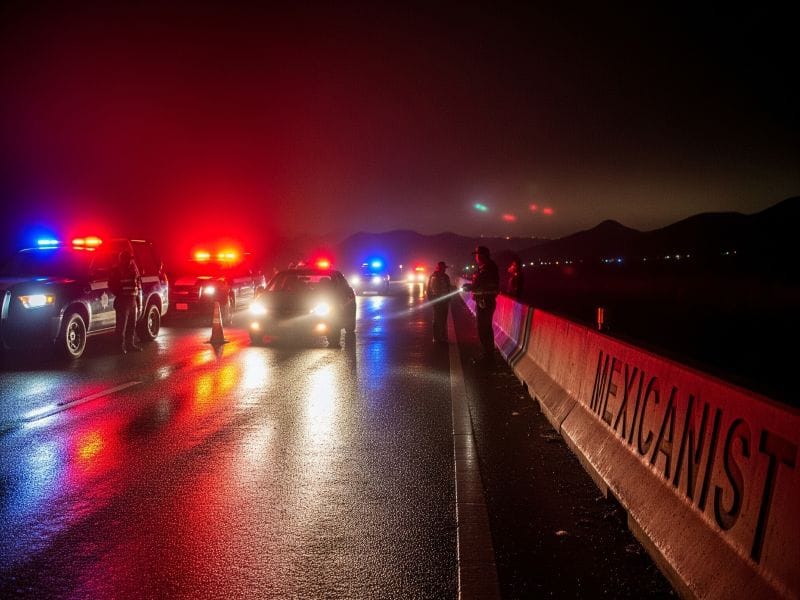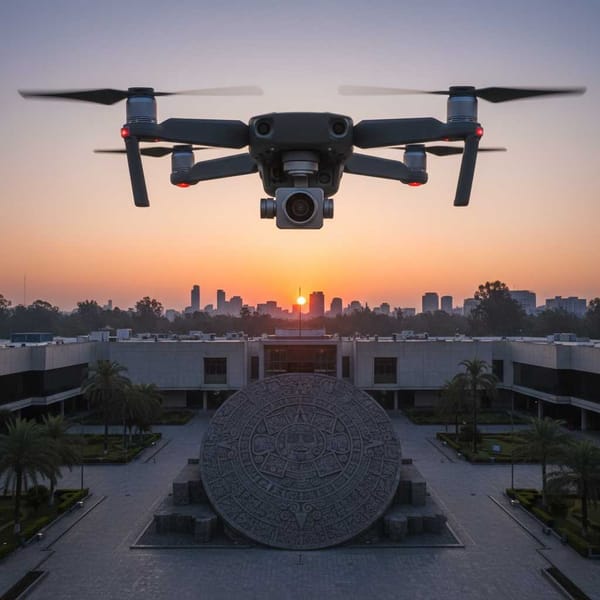License, Registration… or Ransom? The Dark Side of Roadblocks in Mexico
On Mexico’s highways, every flashing light at a checkpoint is a gamble—guardian of law or predator in disguise—revealing a nation where security and abuse share the same lane.

There’s a particular kind of silence you only hear on a Mexican highway at night. The hum of tires on asphalt, the occasional truck blasting its horn, and then—suddenly—the red-and-blue glare of a checkpoint.
Some drivers roll down their windows with a sigh of relief; others grip the wheel a little tighter, pulse quickening. Is this the police, the National Guard… or someone else entirely? In a country where both criminals and authorities wave people off the road, the answer is not always obvious.
The Legality Question
One of the most common refrains you hear—especially on TikTok and YouTube—is that “all checkpoints are illegal.” Viral videos show drivers lecturing officers through half-open windows: “You need a warrant! You can’t search me!”
And it makes for good content. But it’s also wrong.
As Mexico’s Constitution and the National Code of Criminal Procedure spell out, the police can inspect vehicles and people under “reasonable suspicion” and in cases of flagrancy. It’s not the Wild West, but it’s not “untouchable citizen sovereignty” either. The rules are messy, but they exist. The problem isn’t legality—it’s trust.
Because when a man in a black vest says he’s with the law, how do you know he’s not just another guy with a radio and a borrowed rifle?
“Retenes” (roadblocks) are as Mexican as tacos al pastor. They’re used to catch drunk drivers, haul smugglers off buses, seize stolen cars, and, sometimes, just to remind everyone that the state is still there.
But they’ve also been weaponized. Cartels set up fake checkpoints to abduct rivals or terrorize communities. Corrupt cops use them as shakedown machines—cash or contraband, your choice. That’s why a flashing light on the highway makes people uneasy: the same mechanism that’s supposed to protect you can also fleece you.
The Misinformation Game
On social media, “checkpoint influencers” encourage drivers to defy officers—refusing to hand over documents, refusing to open trunks. They call it a civic stand for liberty. The reality? Often it’s just clickbait.
What they don’t say is that ignoring a lawful stop can escalate from “traffic inconvenience” to “obstruction of justice” faster than you can say Facebook Live. The law, as dry as it sounds, is clear: reasonable suspicion means they can stop you. And if you refuse, you might be the one in legal trouble.
But here’s the catch—citizens are not crazy to be suspicious. Mexico’s history of abuse at roadblocks is long and bloody. Torture, illegal detentions, “lost” evidence—it’s all in the record. The rule of law exists, but so does the rule of “who’s holding the rifle tonight.”
So what’s the way out of this chess game between citizen and checkpoint? Officials like Ulises Lara López argue for better coordination, stricter protocols, and more transparency. Retenes, he insists, must be legal, proportional, and documented.
That sounds bureaucratic, but it matters. Because every traffic cone and flashing light isn’t just a nuisance—it’s a microcosm of Mexico’s bigger struggle: whether the rule of law belongs to everyone, or just to those powerful enough to enforce it.
Next time you see a checkpoint, think of it less as an obstacle and more as a mirror. It reflects both Mexico’s capacity for order and its vulnerability to abuse. And somewhere between those two lies the truth of the country’s security.




